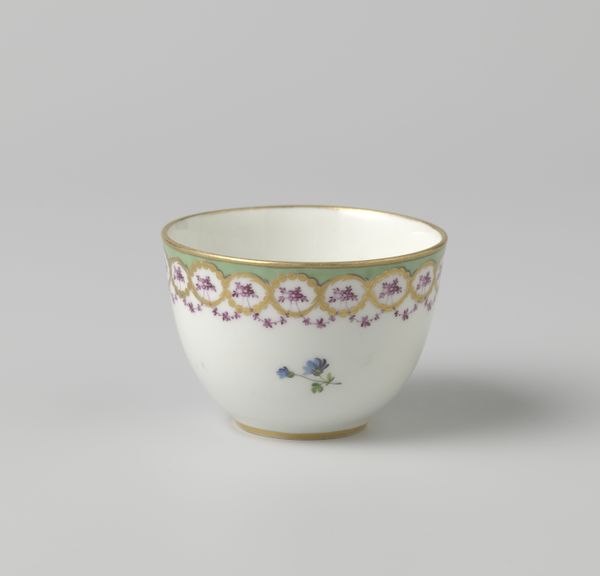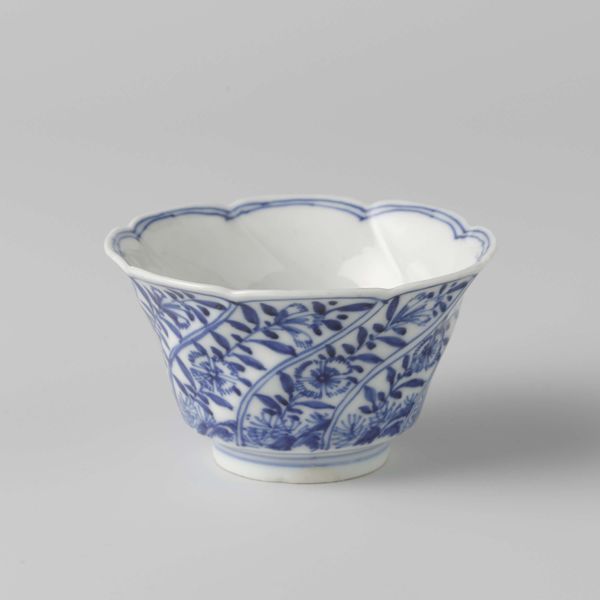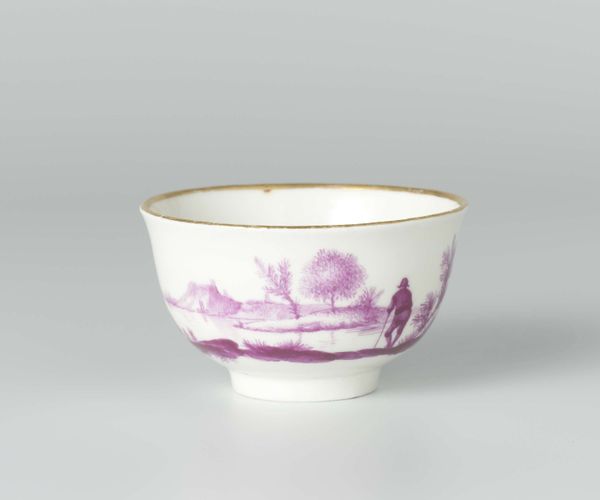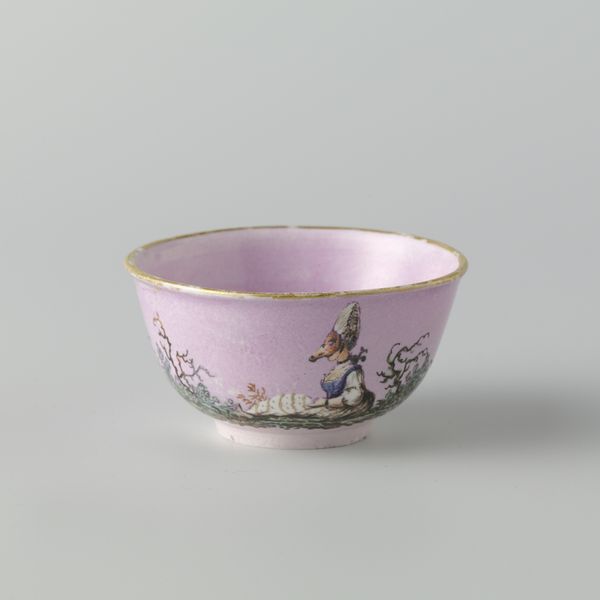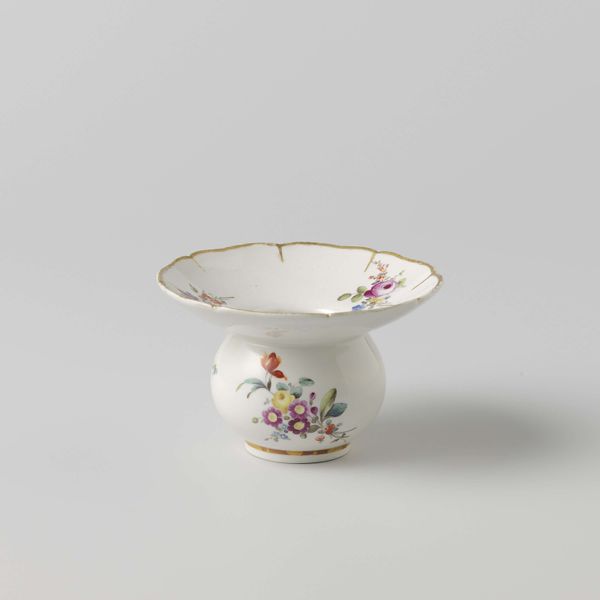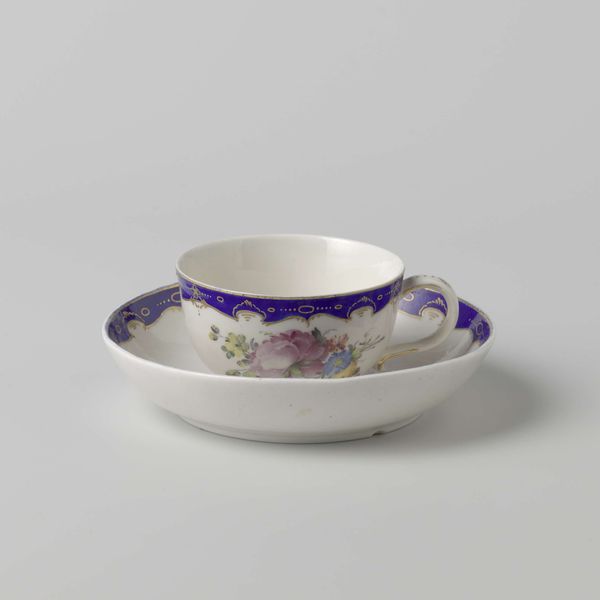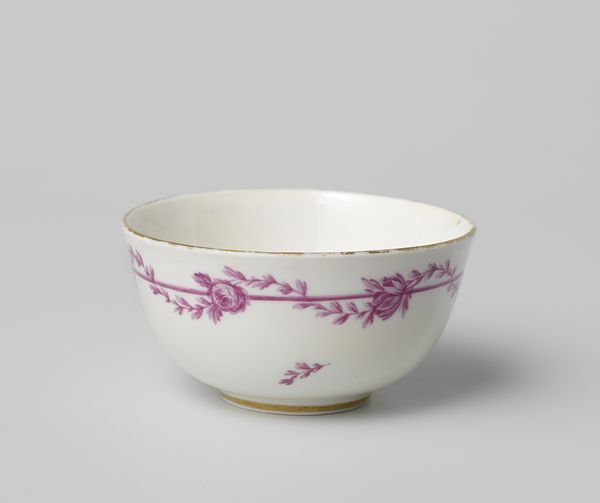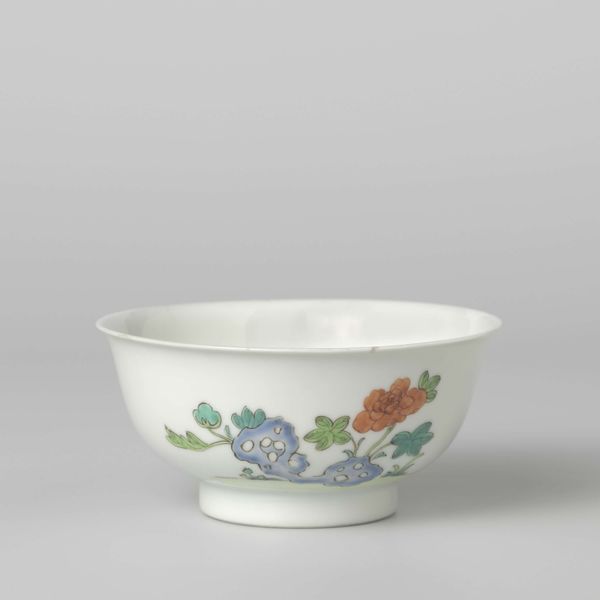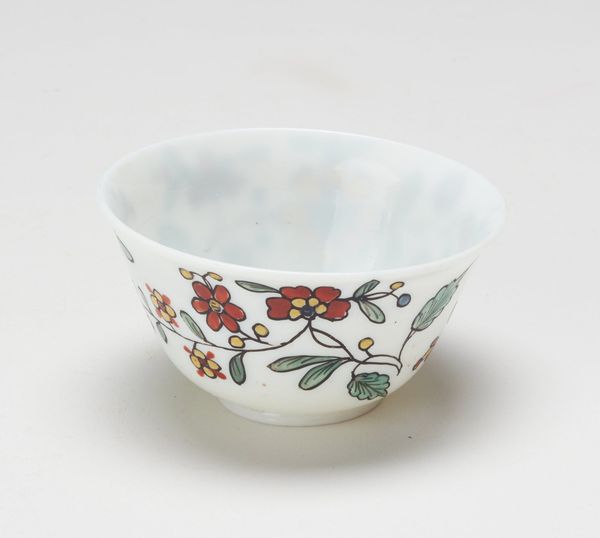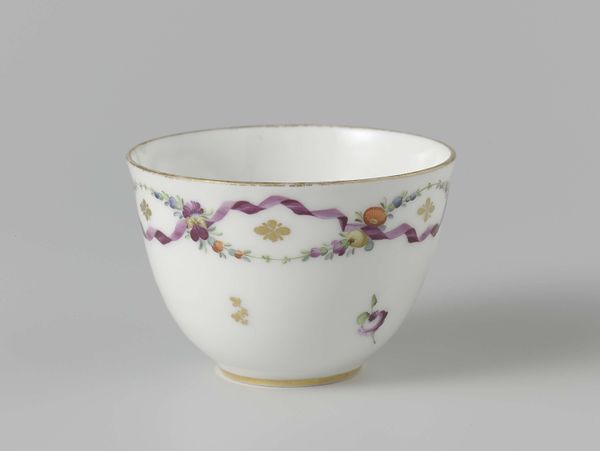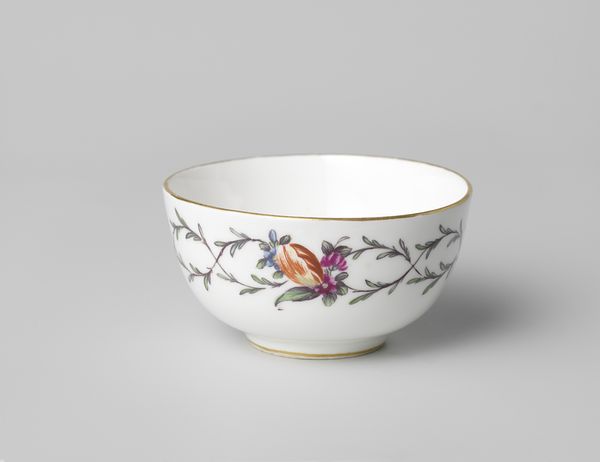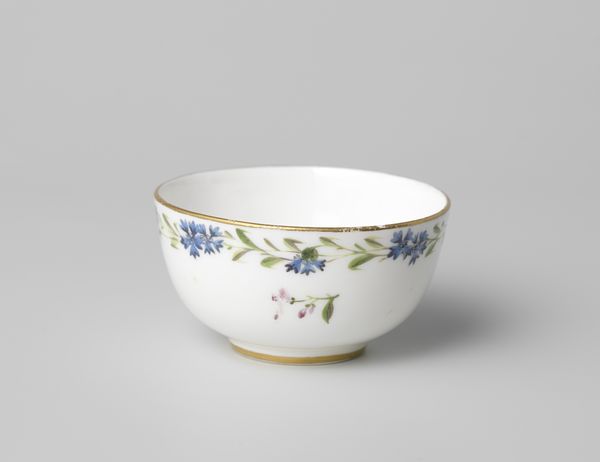
ceramic, porcelain
#
ceramic
#
porcelain
#
ceramic
#
decorative-art
#
rococo
Dimensions: height 3.8 cm, diameter 6.5 cm, diameter 2.9 cm
Copyright: Rijks Museum: Open Domain
Curator: A captivating little thing, isn’t it? This is an anonymous work titled "Bell-shaped cup modelled in the shape of a flower," made from porcelain, dating from around 1740 to 1760, currently held in the Rijksmuseum collection. Editor: Immediately, the pale mauve, almost watercolor wash-like application on the petals strikes me. There's a certain delicacy and elegance in the undulating rim, a rhythmic, almost musical quality to the overall form. Curator: That "watercolor" effect comes from careful manipulation of the porcelain itself. We have to think about the source of materials; where did this clay originate? What labor conditions were involved to transform earth into something so refined? The final creation and function were for elite consumption, indicating both material value and symbolic capital within its era. Editor: Undoubtedly. Looking at its structure though, you see the meticulously molded petals—each layer catching the light and defining the form. I wonder, what did its creator intend to evoke with such detail? The way they structured the composition around a botanical theme, how they explored organic patterns? Curator: Possibly to show off technological advancement! Europeans sought to replicate Asian porcelain production and decoration techniques, like the sprigging we see mimicking the floral shape here, both aesthetically pleasing and industrially groundbreaking given earlier production limitations within Europe itself. Editor: The choice of colour seems equally meaningful. Pale pink, almost lavender, hinting at innocence, perhaps, or refined luxury—it works in concert with the fluted rim. It creates an impression of both sturdiness and fragility that holds undeniable appeal for collectors today because within Rococo forms such choices have significant semantic and sensual power. Curator: The form, material and function combined speak to very specific desires of a wealthy clientele, who actively sought the “latest” in materials—both within global commerce contexts but also the localized manufacturing techniques across different guilds and artisan workshops. Editor: Examining the form further I appreciate your perspectives so much now because considering the whole piece including craftsmanship highlights artistic value as well beyond class. Curator: Exactly—examining both helps contextualize its historic impact, aesthetically or from socioeconomic lenses, broadening possible avenues and perceptions.
Comments
No comments
Be the first to comment and join the conversation on the ultimate creative platform.
